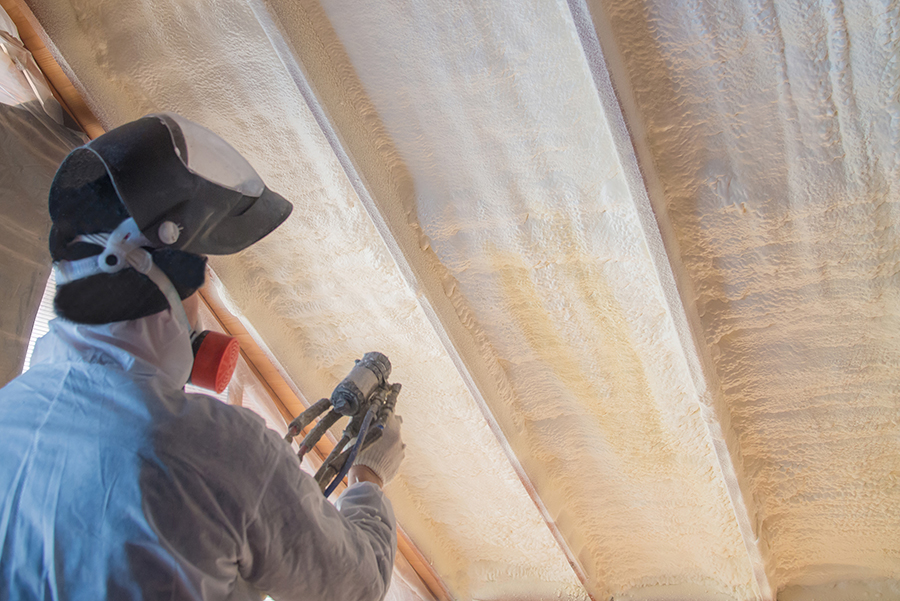
Spray polyurethane foam (2-part spray foam) is made by mixing chemicals to react and create a foam, which happens very quickly. When this reaction occurs, the chemicals expand to create a foam that is excellent for gap filling, insulating and flotation. The mixture is also great for air seals and providing a moisture barrier. SPF insulation  resists heat transfer well, and usually provides a solution in reducing unwanted air infiltration through cracks, seams, and joints.
Spray polyurethane foam is made by combining two liquids during a chemical reaction to form a foam. The two liquids come in different containers. These two containers are generally referred to as the “A” side and the “B” side. The “A” side of the  system is typically methylene diphenyl diisocyanate (MDI) and polymeric methylene diphenyl diisocyanate (pMDI). The “B” side of the system is typically a blend of polyols, catalysts, blowing agent, flame retardant, and surfactant. Polyols are part of the chemical reaction to make the foam. The other ingredients in the “B” side serve help control the creation of the foam bubbles (“cells”) in the best way, and to provide the various characteristics of the finished product.
Homeowners use spray polyurethane foam both when retrofitting or choosing insulation for a home because it saves on energy costs and improves comfort. Once the spray is applied, a cellular plastic forms and acts as a continuous barrier on walls, corners and contoured surfaces. SPF insulation is generally described as a high-pressure foam or a low-pressure foam and is available as “open-cell” or “closed-cell” foam, which have several major differences. Although they both have advantages and disadvantages, depending on the desired application requirements one will be best suited to your project.
To learn more about how to buy the right spray foam for your project, view our buying guide.
